The purpose of the study of O’Neill’s only knife technique is to provide a specific knowledge regarding the use of the knife in Hand-To-Hand combat; to describe positions and movements used in attack and defense/counter offense, and to set forth a program for instruction in the O’Neill system of Hand to Hand combat.
Boxing utilizes an athletic performance model that weighs heavily on MINDFUL repetition of just a handful of techniques. It seeks the mastery of 4 basic punches, the jab, the cross, the hook and the uppercut which are used in conjunction with footwork and proximity management. By challenging a handful of techniques an entire world of fully functional combatives opens up. Most of which can be utilized in both edged or impact weapons training either by attributes or direct transferability of a specific technique. A boxer learns just a hand full of punches, after getting them down, they are able to build an entire arsenal.
Using the same boxing methodology O’Neill’s knife technique in his proposed FMFM1-4 manual not only holds within it a brilliant quickly learned method of using the blade, but a formula for the training and development of an entire arsenal……that goes far beyond what’s in the pages of his proposed manual.
The following is from section 10 of O’Neill’s proposed USMC Fleet Marine Force Manual 1-4. The manuscript draft was published in November of 1966:
1001. GENERAL
When armed with the knife or club always strike for the opponent’s face. This will force the opponent to raise his weapon to parry or block the blow. Then deliver a side or pivot kick to his groin, pit of stomach, or knee with either foot.
1002. ATTACK AGAINST AN ARMED OPPONENT
If armed with a knife, from the on-guard position strike quickly into the opponent’s eyes. The opponent will attempt to parry of block the blow. Deliver a fast kick to the opponent’s stomach, groin, or knee. The striking movement is similar to the finger jab. The knife should be held close to the body in a comfortable position until attacking. – Section 10 of Nov. 1966 Proposed FMFM1-4 United States Marine corps manual.
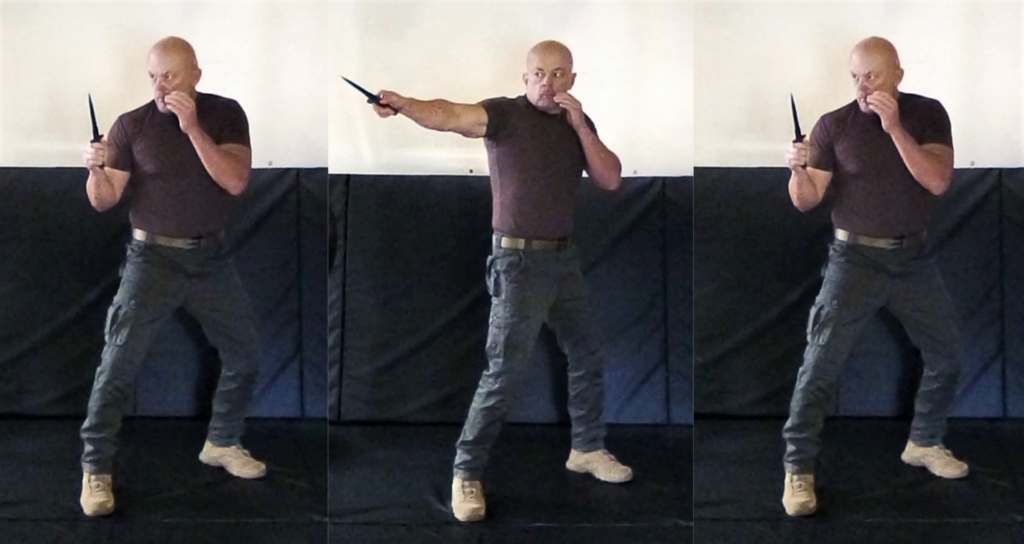 Frank Florence taught Steve Brown that O’Neills knife thrust was executed with more of a flicking whip like motion, like a quick and snappy boxer’s jab. In his proposed USMC manual, Dermot “Pat” O’Neill advocated going for the eyes or face. The thrust whether it is successful or not, brought the opponents hands up then you would follow the flick with a low kick. Normally this kick was to the groin.
Frank Florence taught Steve Brown that O’Neills knife thrust was executed with more of a flicking whip like motion, like a quick and snappy boxer’s jab. In his proposed USMC manual, Dermot “Pat” O’Neill advocated going for the eyes or face. The thrust whether it is successful or not, brought the opponents hands up then you would follow the flick with a low kick. Normally this kick was to the groin.
VARIATION: — If the opponent is facing you in a side-on type stance, then you would throw a pivot kick . If the stab connects, the kick would further set up the enemy for closing and dispatching him with further stabs to vital areas. If the stab failed to connect, then the kick automatically disorients the enemy so that additional stabbing is possible, followed by another kick, etc.
O’NEILL’S ON-GUARD STANCE
Dermot “Pat” O’Neill advocated fighting from a side stance as opposed to being squared up with an aggressor. The importance in a “bladed off” stance cannot be overemphasized. The main thing to remember everything begins and ends in the stance. No matter at what speed you move or in what direction you move your aim is to retain the stance which is the most effective for fighting.
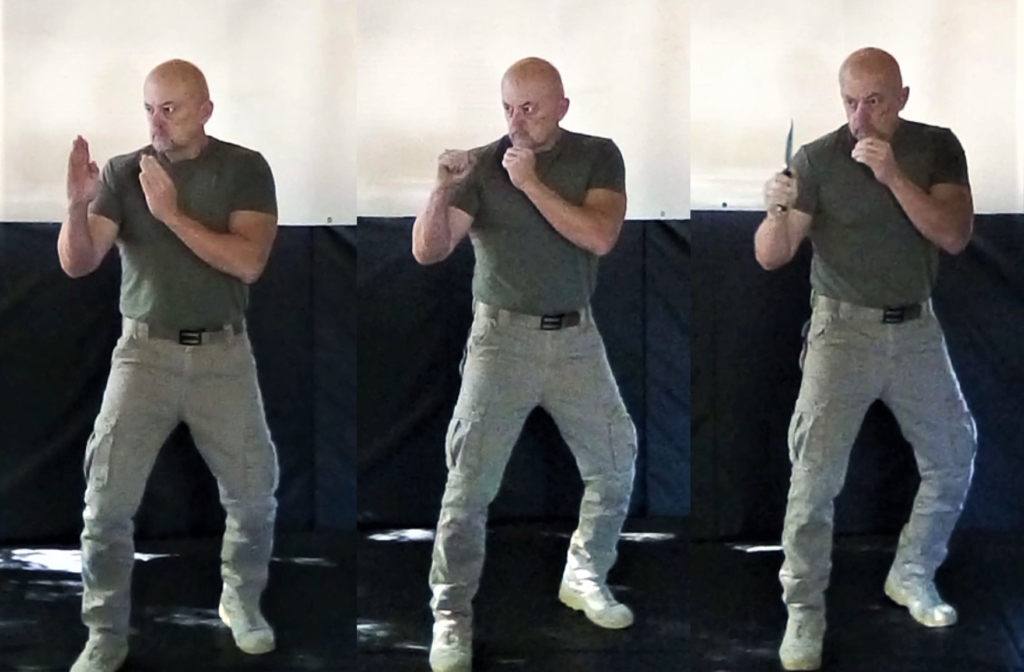
O’NEILL’S ON – GUARD BOXER’S STANCE BLADE STANCE
Pat Dermot O’Neill’s on-guard position/stance (pictured left) demonstrated as shown in the 1966 proposed USMC FMFM1-4, fingers were extended and tightly together at chin level. O’Neill’s on guard position was described as being similar to a traditional boxer’s stance (pictured center). The on-guard stance with the knife (pictured right) was no different than his empty hand fighting or on guard stance.
For the military combatant to be effective in using the knife, they must have two major components. The first component was a mercenary mindset, the killer instinct and the second was it had to be a realistic system of using the knife. When O’Neill taught the First Special Service Force, he was tasked with having to turn out, in the shortest possible amount of time trained dangerous fighters who were confident in their ability to deal effectively with anything an enemy/attacker has to offer them in unarmed combat. He had to instill an aggressive offensive mindset as opposed to a defensive mindset. He had to concentrate on the sole objective to quickly and single handedly neutralize the threat. To accomplish these objectives there had to be a very natural connection between armed and unarmed combat techniques, techniques that were devoid of complexity.
O’Neill’s variation of the forward thrust was a brilliant, quickly learned and effective method for using the knife. This one technique brilliantly demonstrates a dynamically logical, compact and simple fighting methodology. O’Neill’s variation of the forward thrust was designed to be uncomplicated, economical and brutally effective. Whether armed or unarmed, all utilized the same body mechanics and kinetic chain. One can see this demonstrated by the natural manner in which O’Neill laced the straight thrust with the knife into certain specific unarmed hand to hand techniques that he taught.
 It goes without saying that the finger jab to the eyes and the lead thrust with the knife are simple extensions of the lead jab in boxing. O’Neill advocated using side stance to strike from and applied the same exact stance and movement to both armed and unarmed techniques.
It goes without saying that the finger jab to the eyes and the lead thrust with the knife are simple extensions of the lead jab in boxing. O’Neill advocated using side stance to strike from and applied the same exact stance and movement to both armed and unarmed techniques.
Besides being easy to learn O’Neill’s knife technique was:
1. Faster- the shortest distance between two points is a straight line
2. More accurate
3. Cause more damage
4. Balance is less disturbed
5. Safer
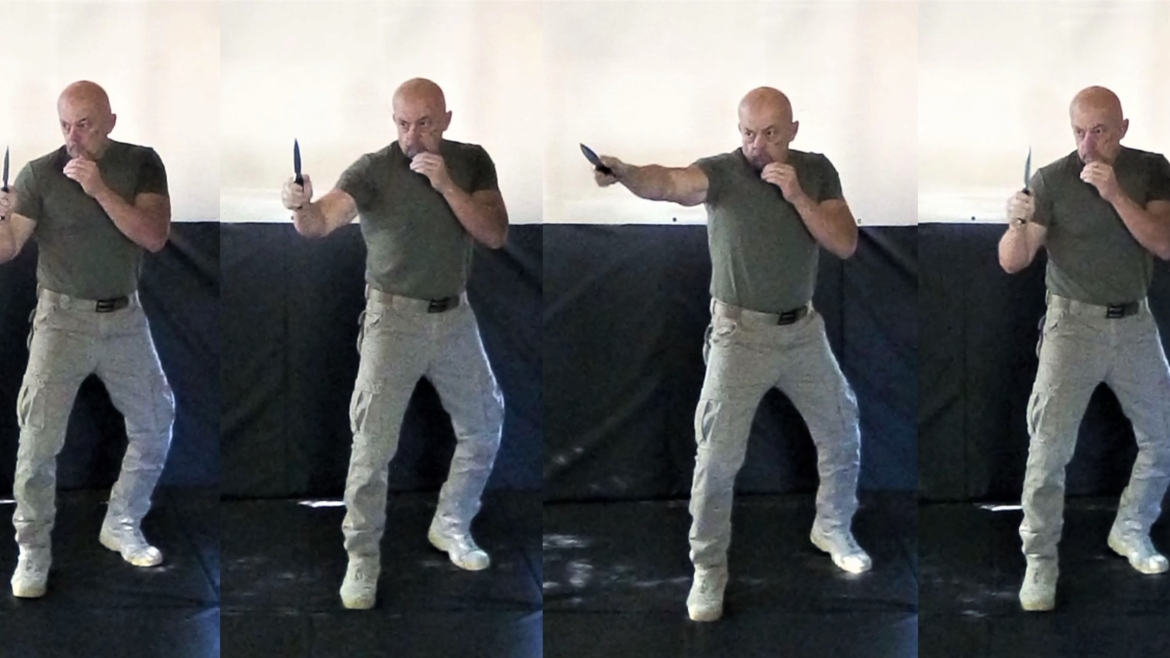
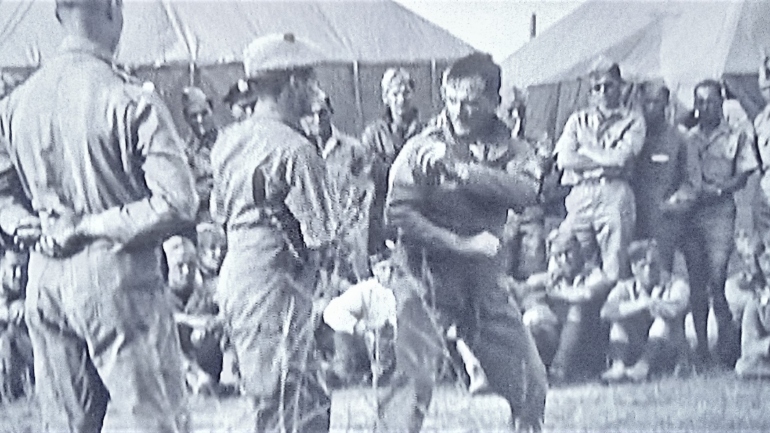
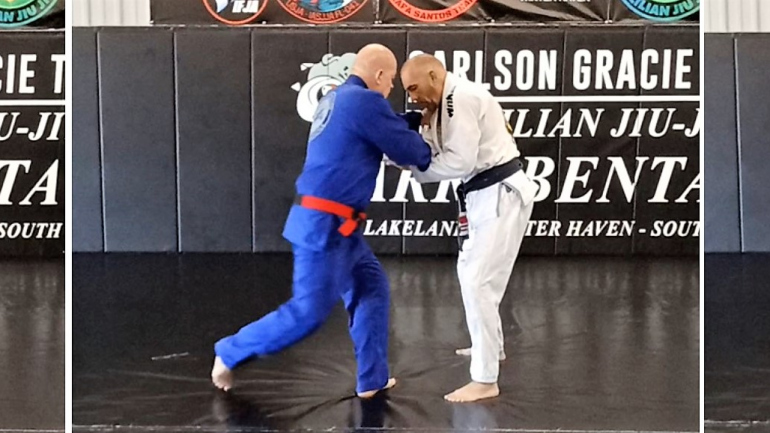
8 Comments
Douglas Morgan
This a GREAT posting. Your explanation is clear and reasonable.
I’ve always heard and read that a fighting knife should be held in the rear position. But why not put it up front? It’s efficient and it makes an impression
Barron Shepherd
Douglas, thank you so much for the compliment. I do my best. Great to know that it is appreciated.
Tommy
Great blog mate. Combat Judo is well worth anyone exploring so it’s great you’re drawing attention to it and keeping it relevant
Barron Shepherd
Tommy, thank you for the awesome compliment. I am doing my absolute best.
Bill Goble
Good analysis Barron.
Jason kimes
Great article. I am a fan of simplicity and practicality. I really appreciate the techniques, but more importantly how Barron presents the material. I like military history, Judo and other martial arts. Keep up the great work! Jason
Barron Shepherd
Jason, thank you I am glad that you enjoy the article. Your comment is appreciated and means alot. Thank you again.
Abdul Rashid
Excellent post ! Appreciate it